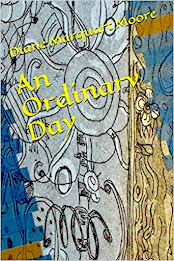From that initial conversation, it was only a short leap to the work she was doing concerning The Holy Spirit and The Spirit of Reiki, a thesis that explicated the interconnection of Theology, Science, and the practice of Reiki. The leap from the acceptance of her thesis to the writing of a book that could educate and inspire those who were practicing Reiki was an even shorter one. The book is a comprehensive study connecting Christian theology and the study of the Holy Spirit, Science, and Reiki therapy, the latter a practice similar to the Christian practice of the laying on of hands.
The Holy Spirit and The Spirit of Reiki traces the spiritual journey of a woman who underwent a transformation from a skeptical scientist to a Reiki Master, then launched into a theological quest to understand the relationship between the Holy Spirit and the practice of Reiki. Ruth (otherwise known as Dr. Allen) presents a convincing model for universal life energy as used in Reiki therapy and healing by the energy of the Holy Spirit used in Christian practices; e.g., anointing.
As Ruth relates in The Holy Spirit and The Spirit of Reiki, in addition to Reiki therapy, many people in the western world have discovered the healing potential of complementary health practices such as acupuncture, healing touch, massage, yoga, meditation, etc. She writes, “Although Reiki energy is nonsectarian and universal in nature, its gentle touch uniquely manifests the healing ministry of Jesus for our time…numerous people, Christians and non-Christians, have discovered their charism of healing when practicing the complementary health practice of Reiki therapy…”
Of special interest is Ruth’s personal story, or call to the healing ministry, through a series of events that involved her healing by a Reiki practitioner following several debilitating accidents, and those accidents ultimately lead to the discovery of her own ability to heal, albeit a reluctant journey.
I became intrigued with a chapter of research by James L. Oschman, PhD., a biologist and bio-physicist, who speaks out in defense of Reiki, explaining that all medicine is energy medicine and that that there is an energy surrounding each human body. Oschman then relates this energy to x-rays and magnetic resonance imaging that has been used for biofield measurements for many years. Ruth also reports that Dr. John Zimmerman, a physician and professor at the University of Colorado, School of Medicine, whose specialty fields include Clinical Cardiac Electrophysiology, recognizes the energy produced by the aforementioned machines as the same energy which is produced by the hands of energy-balancing practitioners, or Reiki workers. Ruth reveals Zimmerman’s conclusion that the “biomagnetic field produced by the hands of energy practitioners can induce current flows in the tissues and cells of individuals who are near them…” These are amazing endorsements of Reiki offered by two outstanding scientists.
Ruth’s consensus in The Holy Spirit and The Spirit of Reiki is that the practice of Reiki involves the healing touch of the Holy Spirit, and her beliefs are endorsed by The Rev. Robert D. Hughes, III, PhD., School of Theology, University of the South, who has written the definitive book about the Holy Spirit (Beloved Dust: Tides of the Spirit in the Christian Life). Dr. Hughes recognizes Reiki as “a legitimate means of training that expresses the charism of healing from the Holy Spirit.”
The Holy Spirit and The Spirit of Reiki is a personal story with a universal message for a world that needs healing, and Ruth has presented her case for the interconnection of Reiki and the Holy Spirit convincingly, even to the point of taking on the Roman Catholic Church in a chapter entitled “Healing in Christianity: Criticisms and Questions Regarding Reiki.” She includes an appendix that reveals the criticism of Reiki, authored by the Committee on Doctrine, U.S. Conference of Catholic Bishops, a committee that decided “Reiki therapy has no support in findings of natural science or in Christian belief.” Ruth’s credentials as a scientist, researcher, and Master Reiki practitioner, as well as her exposition of Reiki as a manifestation of Christ’s healing ministry and his empowerment of the disciples to carry on the work of the Holy Spirit, support a cogent argument against Roman Catholicism's condemnation of Reiki.
Also included in The Holy Spirit and The Spirit of Reiki is an appendix containing healing services practiced today in the Episcopal Church and a service of healing and blessing for application in any Christian church.
This is a book for all those who need spiritual, emotional, mental, and physical healing and for those who feel called to train in a field that employs the healing touch in the service of others.



















